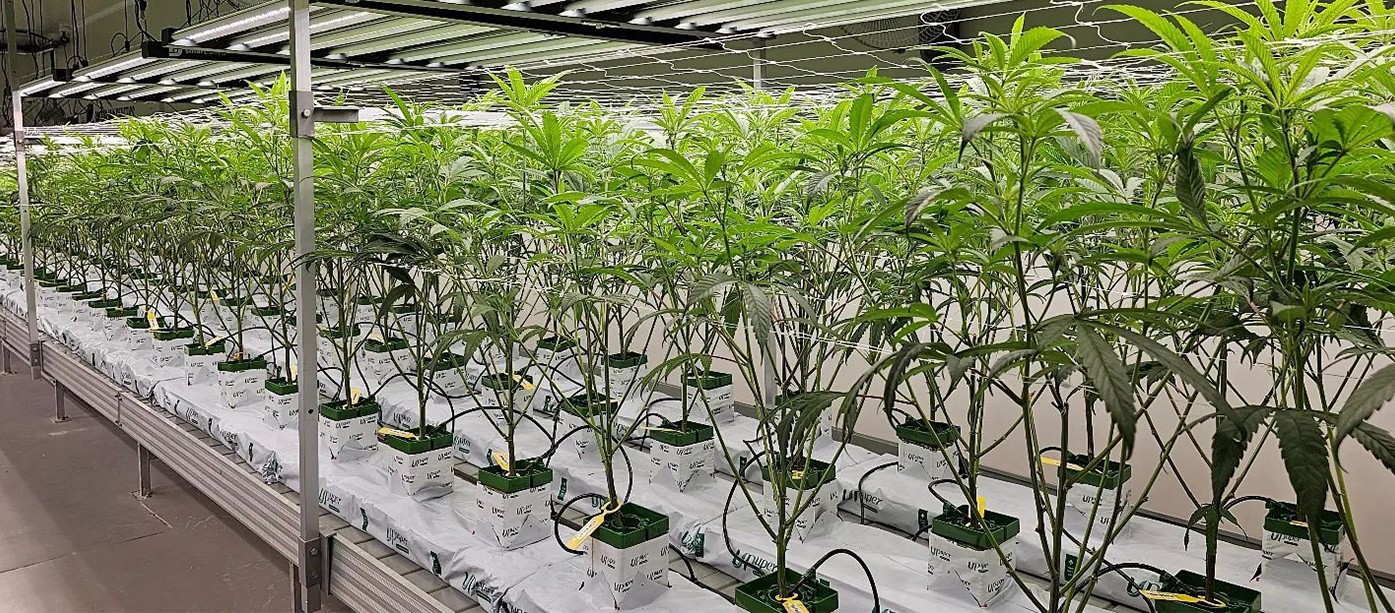Welcome back, friends! Today, we're diving into the third installment of our series on factors affecting cannabis growth. We'll be discussing water, CO2, and pruning.
Whether cultivating cannabis indoors or outdoors, the factor of water is significant. We've previously discussed in the first installment the impact of nutrient solution's pH and EC on cannabis growth; this can also be considered a part of water. Appropriate water temperature and clean water allow cannabis to grow in a more controlled and healthier environment.
There are many types of water sources used for irrigating cannabis, such as streams, spring water, wells, tap water, and collected rainwater etc. However, untreated water might affect the efficiency of nutrient absorption by the cannabis root system. Tap water and well water contain higher levels of TDS (Total Dissolved Solids). The molecules of the compounds dissolved in untreated water, primarily magnesium and calcium carbonate, are large, making it difficult for plant roots to absorb effectively. The anions and cations in untreated water might also lead to the accumulation of salts and negatively impact cannabis growth.
Using distilled and potable water for cannabis irrigation is the safest method, but the cost of using and preparing these waters is too high. We recommend using a filter to treat the compounds and salts in the water source as much as possible and irrigating cannabis with the treated water.
Unlike outdoor cannabis cultivation, using hydroponic technology indoors, for instance, in greenhouses, can save a significant amount of water costs. It is well known that plants grown in greenhouses often grow better than outdoors; their root systems are more developed and can absorb more nutrients. Although the water requirement of the plants increases, growers can use a drainage recycling system to recover and reuse the nutrient solution in the substrate.
In the process of drainage recovery, experienced growers will notice that the effluent flowing out from coco coir or peat becomes darker in color. This will affect the efficiency of effluent recycling (disinfection), mainly using ultraviolet disinfection. Rockwool substrate has a natural advantage. Unlike coco coir or peat, the liquid flowing from the UPuper® rock wool substrate does not change color, allowing growers to use ultraviolet disinfection equipment to disinfect and reuse the effluent.
Too low or too high water temperatures can also affect the growth efficiency of cannabis. We recommend keeping the irrigation water temperature around 22 degrees Celsius. However, the specific irrigation water temperature still needs to be determined by the actual greenhouse temperature and the growth stage of cannabis. The temperature of the nutrient solution (water temperature) in the hydroponic substrate will change with indoor temperature. Whether the greenhouse temperature is too cold or too hot, it will affect the growth of the cannabis root system. While monitoring the greenhouse temperature, growers also need to be mindful of the irrigation water temperature and the temperature inside the substrate.
Plants need carbon dioxide (CO2) for photosynthesis. Under appropriate temperatures, CO2 concentrations, and light intensities, the efficiency of plant photosynthesis will be improved. The same goes for cannabis cultivation; good photosynthesis can significantly improve the yield and quality of cannabis. The most economical CO2 content range in a greenhouse environment should be 1000-1200ppm. There are many ways to supply CO2, for example, CO2 cylinders, which are a good choice for small and medium-sized greenhouses. Large greenhouses generally use natural gas combustion to produce CO2, which is even more practical in the cold winter. The heat generated by combustion can increase the temperature inside the greenhouse, and the CO2 produced can assist cannabis in photosynthesis. It is worth noting that excessive CO2 concentrations can be harmful to humans; concentrations above 5000 ppm are lethal. Growers need to use CO2 sensors correctly and control the release of CO2.
As mentioned before, plant photosynthesis requires the joint participation of CO2, sunlight, and temperature. Supplying CO2 in situations with insufficient light or when the temperature is too low will not enable cannabis to achieve the highest efficiency in photosynthesis. Please refer to the two introductions we published before for the choice of light and temperature.
Pruning is also crucial for cannabis growth. If cannabis is allowed to grow freely, most of the nutrients will concentrate on the main stem, leading to a reduction in yield. Removing the top of the main stem of cannabis (Topping) at the appropriate stage (Vegetative Growth) can force the plant to supply more energy to its side branches, making the leaf distribution denser and improving the overall yield.
In previous articles, we discussed lighting. As cannabis grows, the leaves at the bottom will be shaded by the top leaves and won't receive sufficient light. Excessive density of bottom leaves can also obstruct air circulation, increasing the risk of diseases in cannabis. Pruning appropriately at this time will maintain the healthy growth of cannabis. The branches at the bottom are the priority for pruning as they lack light exposure for extended periods and don’t significantly impact the harvest. Pruning them can also provide better air flow at the bottom of the cannabis plant. The next ones to prune are those branches located in the middle and are obscured for the same reasons mentioned earlier.
After good pruning, most of the cannabis leaves can absorb sufficient light. Coupled with proper water treatment and CO2 supply, the yield and quality of cannabis will be significantly improved.







